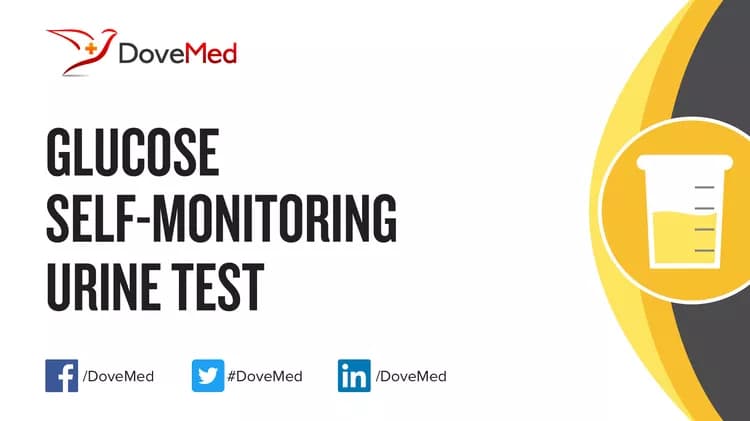What are other Names for this Test? (Equivalent Terms)
- Glucose Clinitest Self-Monitoring Urine Test
- Glucose Diastix Self-Monitoring Urine Test
- Glucose Tes-Tape Self-Monitoring Urine Test
What is Glucose Self-Monitoring Urine Test? (Background Information)
- Glucose is a simple sugar that serves as the body’s main energy source. Some organs, such as the brain, use glucose exclusively for energy
- Glucose is obtained through the diet directly and indirectly. Foods may contain glucose; alternatively, more complex sugars, such as maltose, lactose, and starch, are broken down and their components converted into glucose
- After a meal, blood glucose levels may rise markedly. Conversely, they may fall after a strenuous workout has forced muscles to use up the body’s glucose stores
- Blood glucose levels must be maintained within a relatively narrow range. Excess glucose in blood may damage tissues, while deficiencies may cause fatigue, lightheadedness, and brain malfunction
- The body compensates for the various factors that impact blood glucose levels through the use of hormones. Two such sugar-regulating hormones are insulin and glucagon. They play opposing roles:
- Insulin is made by beta cells of the pancreas. It is released in blood after a rise in blood glucose (such as after a heavy meal), to help lower it to normal levels by stimulating cells to take in glucose and other nutrients
- Glucagon is made by the alpha cells of the pancreas and has the opposite effect. It is released when glucose levels fall below normal (such as after a workout) and causes cells to produce glucose and release it from their stores
- Problems with either of these mechanisms may cause abnormalities in blood glucose levels that can even be life-threatening
- The most common cause of elevated glucose is diabetes mellitus, or simply “diabetes”. There are 3 types of diabetes mellitus, all of which stem from problems with insulin function:
- Type 1, or insulin-dependent, diabetes results from the autoimmune destruction of beta cells of the pancreas
- Type 2, or insulin-independent, diabetes results from the desensitization of cells to the effects of insulin
- Gestational diabetes may occur during pregnancy and result in excessively large babies that exhibit low glucose levels
- Under normal circumstances, the urine should not contain glucose. The presence of glucose in urine usually means that excessive levels have accumulated in blood due to a metabolic disorder
- The Glucose Self-Monitoring Urine Test helps determine the levels of glucose in urine through the use of portable, user-friendly devices. It is used to diagnose diabetes, cancers, and other metabolic disorders
- Current tests offer reliable glucose readings in less than 2 minutes. They are also less invasive and easier to use than previous versions of the test
What are the Clinical Indications for performing the Glucose Self-Monitoring Urine Test?
Following are the clinical indications for performing the Glucose Self-Monitoring Urine Test:
- Monitoring glucose levels of individuals with diabetes
- Frequent urination
- Increased thirst
- Fatigue
- Blurry vision
- Rapid weight loss
- Tingling and numbing in the extremities
- Giving birth to a baby over 9 pounds
- Obesity
- History of cardiovascular disease
How is the Specimen Collected for Glucose Self-Monitoring Urine Test?
Following is the specimen collection process for Glucose Self-Monitoring Urine Test:
Sample required: Urine
Process of obtaining a urine sample in adults using self-monitoring devices:
- Check the procedure for the specific device to be used
- Obtain a fresh urine sample via the container provided by your self-monitoring device
- Dip the reagent strip provided by your device, remove the strip, and wait for the appropriate time (10 seconds for Clinitest, 30 seconds for Diastix), for the reaction to take place
- Compare the color of the test strip to the color chart provided by the device
Preparation required: No special preparation is needed prior to the test.
What is the Significance of the Glucose Self-Monitoring Urine Test Result?
The significance of the Glucose Self-Monitoring Urine Test result is explained.
- A high value for the test may indicate:
- Diabetes mellitus
- Acromegaly
- Cushing’s syndrome
- Glucagonoma
- Severe liver disease
- Pheochromocytoma
- Pancreatitis
- Hyperalimentation
- A low value for the test may indicate:
- Addison’s disease
- Galactosemia
- Hereditary fructose intolerance
- Hypopituitarism
- Insulinoma
- Malabsorption syndromes
- von Gierke disease
- Insulin overdose
The laboratory test results are NOT to be interpreted as results of a "stand-alone" test. The test results have to be interpreted after correlating with suitable clinical findings and additional supplemental tests/information. Your healthcare providers will explain the meaning of your tests results, based on the overall clinical scenario.
Additional and Relevant Useful Information:
- The Glucose Self-Monitoring Urine Test may not provide reliable results when glucose levels are very low (less than 50 or 60 mg/dL) or very high (greater than 450 or 500 mg/dL)
- Stale urine may interfere with the results of the test
- Diabetes insipidus is a rare disorder whereby the kidneys cannot conserve water
Certain medications that you may be currently taking may influence the outcome of the test. Hence, it is important to inform your healthcare provider of the complete list of medications (including any herbal supplements) you are currently taking. This will help the healthcare provider interpret your test results more accurately and avoid unnecessary chances of a misdiagnosis.
Related Articles
Test Your Knowledge
Asked by users
Related Centers
Related Specialties
Related Physicians
Related Procedures
Related Resources
Join DoveHubs
and connect with fellow professionals


0 Comments
Please log in to post a comment.